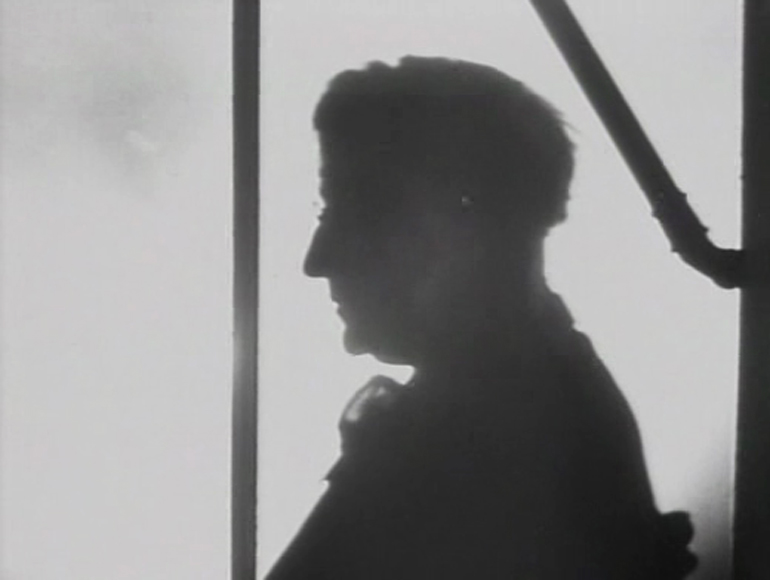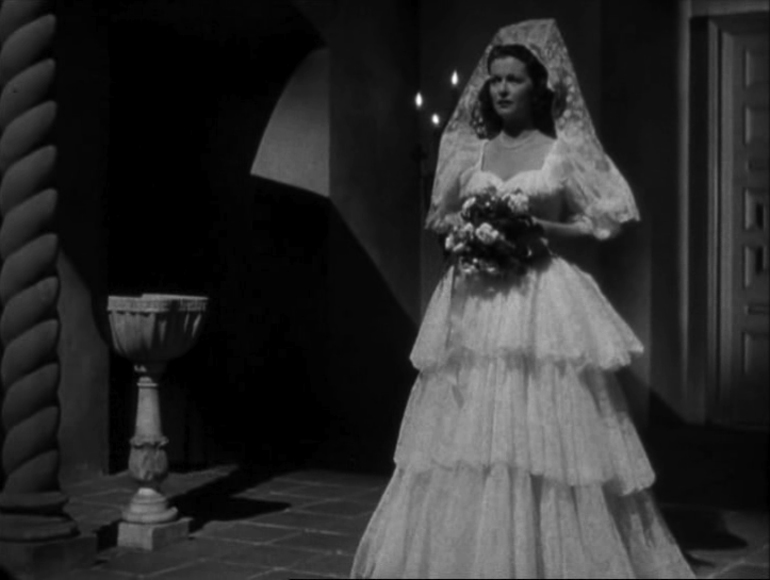INTERVIEW WITH PIERRE LÉON. A RHETORICAL DISCUSSION OF THE VOICE-OVER AND CONSIDERATIONS REGARDING THE ACTOR'S VOICE AS FILMIC MATERIAL
Fernando Ganzo
 FORWARD
FORWARD
 DOWNLOAD
DOWNLOAD
 ABSTRACT / KEYWORDS / ARTICLE / ENDNOTES / BIBLIOGRAPHY / ABOUT THE AUTHOR
ABSTRACT / KEYWORDS / ARTICLE / ENDNOTES / BIBLIOGRAPHY / ABOUT THE AUTHOR
I've always been struck by how everything in cinema takes place in the present; how, to use an expression of Pier Paolo Pasolini, we perceive cinema, as we perceive reality, as an “infinite sequence shot”1. Indeed, what we call the flash-back, the jump cut, and other time shifts are only fully comprehensible if there is something that involves text: a caption indicating the time we are in, a newspaper, a calendar, some information revealed in the appearance of the actors… Otherwise, for us one shot always follows the previous one. Above all, the privileged element for understanding this narration is normally the voice-over. Do you believe that the voice-over has been above all a means of bringing film closer to writing? In a manner, I’d be tempted to say, that is very natural and instinctive...
I’d like to begin by nuancing your introduction. To indicate time breaks, which is what flash-backs, jump cuts (and, I’d add, dreams) are by definition, the procedures are not necessarily textual, but visual: fades, lap dissolves, distortions, changes of subject matter, of light, stylisation of the performance of the actors and, above all, sound variations. There might be something “textual” in them, and they might not ensure comprehension of the exact nature of this time break with the same precision as written or spoken text, but they fulfil that function. And this is true of both so-called classic cinema (revelation of a traumatic past: Alfred Hitchcock’s Marnie [1964]) and so-called modern cinema (fragmentation of a period of time by a failing memory: Muriel [Muriel ou le temps d’un retour, Alain Resnais, 1963]).
The voice-over has always seemed to me a dangerous process, because it is an exercise that demands rigour, strictness: to speak behind, beside or above the screen is no trivial matter. The voice-over is a burden, a weight that makes the spectator believe in the existence of an off-screen space, when in reality it is merely a sound track like any other. It is superimposed: it is the equivalent of the caption. It is also the place (and herein lies the danger) that allows all manner of formal abuse, leading to what for me is the most detestable: dramaturgical demagoguery. I’m thinking for example of the voice-over of the dead man (William Holden) in Sunset Boulevard (Billy Wilder, 1950), or in the tyrannical mildness of the man in A Letter to Three Wives (Joseph L. Mankiewicz, 1949). I don’t want to seem to be reducing it to this alone, but this is a tendency that predominates these days. When a filmmaker doesn’t know how to resolve a problem in the story, he puts in a voice-over and thinks he has resolved the dilemma. Voice-overs should be prohibited for directors under 40. Precisely because it comes directly from literature, I believe that when you play with the voice-over you need to take that origin into account. Rohmer has made use of it this way, which allows him to feign innocence and, even when he doesn’t use it, we always have the sensation of hearing it in the disturbing chatter of his characters. The same is true of Sacha Guitry: the voice takes the centre of attention, slowing down or suspending the straight action and ultimately takes its place. Rather than literary, it is something novelesque. The voice-over is proof of the novelesque (and this is the trick with which it can be introduced into the story, like the horse in a Troy under siege but impenetrable). However, it is a technique that has been utterly trivialised, and nobody notices it anymore, in Hollywood films at least. Perhaps it is something that has aged as badly as glamour does.
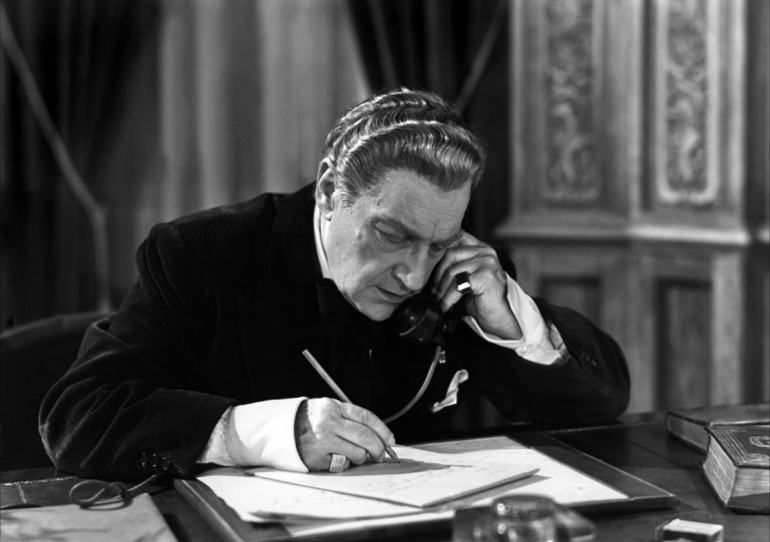
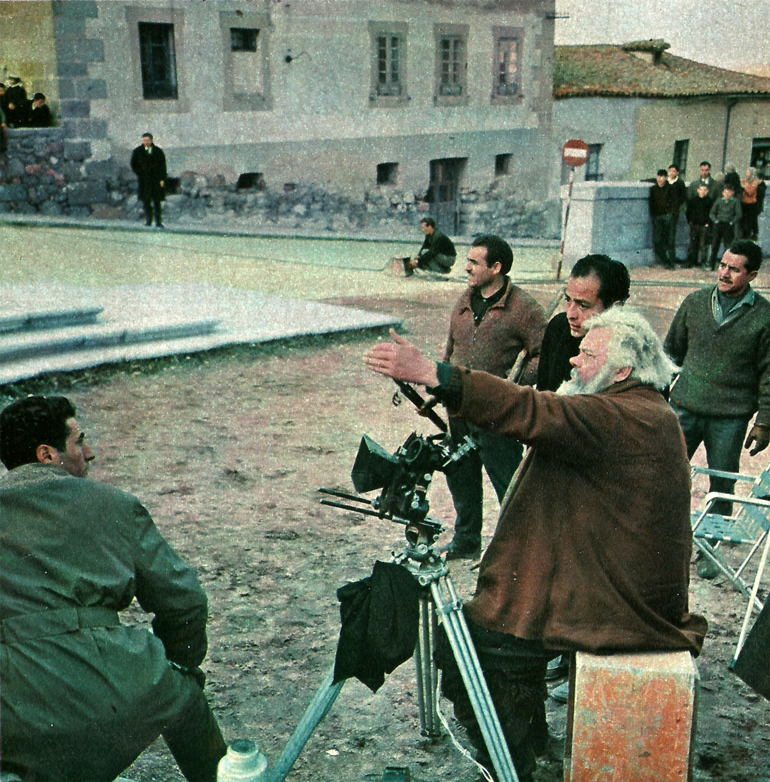
I don’t think anyone except Orson Welles and, in France, Sacha Guitry, has transformed a barely convincing narrative process into purely filmic material. Welles’ voice, obviously, standing in ipso facto for his body, is simultaneously an emanation and projection that is almost physical. Guitry too, and perhaps even more so: without his voice, the actor Guitry doesn’t exist, nor do his dialogues. Welles had Shakespeare to give him that syllabification, that unforgettable rhythm. Guitry could only fall back on Guitry, that is, a brilliant writer, but with little variation and too marked by history, by the social game, by the obligation of excellence. So it’s on the timbre of his voice that Guitry based his cinematic force: not in the theatrical grain, but in its optical translation. And Guitry was so aware of this force that he abused it to the point of concentrating the whole story of The Story of a Cheat (Le Roman d’un tricheur, Sacha Guitry, 1936) outside the frame, where his voice plays both from inside and from outside, locating the desynchronisations and coincidences with disconcerting skill: his voice peels away from the stable image and, on occasions, dubs it, without concern for the age or sex of the characters it dubs. Only Fréhel's song has the right to sound in perfect synchrony.
Marguerite Duras, finally, takes up where Guitry left off, and applies the distancing effect, taking it to the most demented of tragedies (India Song [1975] and Son nom de Venise dans Calcutta desert [1976]). Today, the use of the voice-over seems to me especially associated with mannerism (as in Miguel Gomes’ Tabu, [2012]) or blandishment (as in Malick’s films, where the maladjusted voice treads very carefully in its relationship with the spectator: it is what I call “the crafty2 voice”).
It is true that the image and the voice can work in the same direction. And if, as you say, the image can “allow us to read” time shifts, sound is no different from the image in cases like Duras’ films, in the sense that it “allows us to see”.
I’m convinced that sound forms part of the image. It is another image, distinct from the visual image, stripped of its dimensions through the play with lenses and lights, but it is an image, a vertical image, if you will, that allows us to perceive something in relief.
Everything that certain great filmmakers (Hawks, Renoir, Barnet, Sternberg) invented between, say, 1930 and 1935 (an amazing period for “silent film”, a type of cinema that was no longer silent but that was not yet completely “sound film”), is the result of this realisation. A realisation that is not at all theoretical. In many cases the inventions were the pure product of chance. I’m thinking of The Outskirts by Boris Barnet (Okraina, 1933), and in particular the famous shot where we see a horse sigh twice: “Oh, lord, lord…”. The sound engineer on the film was Leonid Obolenski. He was self-taught, and he knew how to do everything. He’d studied with Kuleshov, like Barnet. A very good actor, and an interesting filmmaker, he took part in all the major experiences of the era. During the Second World War he was captured by the Germans, which cost him a few years in a gulag, until he found himself in the studios in Sverdlovsk, where he worked as first assistant and director of films of scientific dissemination. He also performed some great roles, like Prince Sokolsky in the beautiful adaptation of The Adolescent (Fyodor Dostoyevsky) filmed by Eugueni Tachkov (Podrostok, 1983). But let me return to Okraina. On the arrival of the sound film, the Soviet government sent Obolenski to Berlin, where he stayed for several years to learn the basic techniques. There’s a story that he even worked on The Blue Angel (Der blaue Engel, Josef von Sternberg, 1930); the sound on this extremely famous (and therefore ignored) film is, incidentally, absolutely dizzying. On his return to the USSR, he took part in all of the earliest experiences in sound film (with Kuleshov, of course, but not only with him). But it was in Okraina where he best demonstrated his skills. This is why it’s absolutely essential to see the original version and not the “restored version” from the 1960s, in which all of the sound is completely re-fabricated. The sound is perhaps cleaner, but it is of no interest. Getting back to the story of the horse… Nikolai Ozoronov, Obolensky’s assistant and student, recounted the following in a conversation with Bernard Eisenschitz: “We were shooting in Tver. There was one sequence... Barnet insisted like a madman that I record all the sound directly, including the cart, with the invalid, the soldier with the crutches who whipped the horse... It was galloping like a madman. On a turn, the cart tips over, and the kid falls into the ditch. And he says: ‘Oh, Lord, Lord, what's happening…’ We shot it with direct sound. Everything went well, everything was normal. Then... it all happened like this: we gave the material to the lab, and the next day we’d be able to see what had been filmed. And so I get a call. It’s the cutting room: ‘Come in urgently, we need you. There’s something that isn't working.’ I get there and I ask: ‘alright, girls, what's going on?’ ‘Look for yourself, on the cutting table.’ There were already sound cutting tables then. The positive was there. But... everything was out of synch. Why and how, I had no idea. But it was a fact: it’s out of synch. Perhaps the camera had a mind of its own, I don’t know… anyway, more than half of the words had ended up over the shot with the horse shaking its head. And I burst out laughing. They say to me: ‘Have you gone crazy? Just wait until Barnet sees it; he’s going to kill you.’ ‘Nonsense!’ I tell them, ‘I’m going to call him.’ And they say: ‘Don’t you dare! You know he doesn't even want to hear talk of dubbing.’ I call him: ‘You know what has happened?’ He says: ‘What?’ I tell him. And he says: ‘Ha ha ha ha ha! Maybe God exists after all. But tell the girls to synchronise it as well as possible, so it is really in synch with the horse.’ And so I went to them: ‘Hey, girls...’”
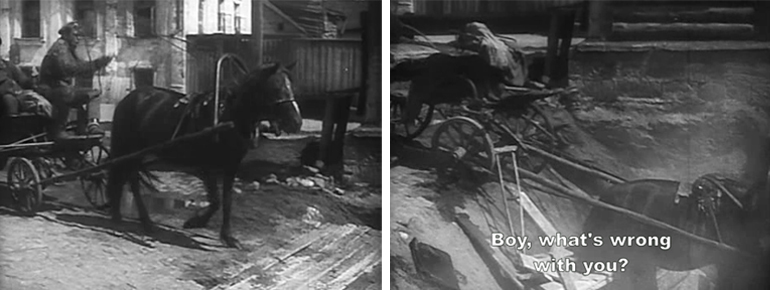
That’s the technique, and nothing more than that: a track that went off synch. With that talking horse, Barnet gave his rather tragic story a tone of a pagan tale that drags the film towards a wild realm where everything gradually falls out of place. Direct sound, too free, as uncontrollable as the street, would disappear from Soviet cinema (as would the street, for that matter), replaced with dubbing (and with the studio, sheltered from reality). This obsession with control, ultimately accepted by everyone, had such an effect on the tradition that contemporary Russian cinema is still incapable of appropriately resolving this issue. For example, at the Moscow School of New Cinema, the film school where I’ve given classes in Moscow, they had no material to record sound, but they’d built an auditorium.
This imbalance that you’re talking about is, in effect, proof of the material side of sound, beyond the voice-over: often, an actor’s voice is so visual and enables spectators to see as much as the image. For example, Jeanne Balibar in your film, L’Idiot (Pierre Léon, 2008), who, in her diction, has something “Guitryesque”, in my opinion…
Yes, that’s what I was saying about the purely visual capacity of sound. On the other hand, I am convinced that the variations, both melodic and rhythmic, compel the whole body to perform a particular physical composition. Perhaps we’d have to ask a deaf person whether what I’m saying here makes sense. To see how they feel, for example, about My Night at Maud's (Ma nuit chez Maud, Eric Rohmer, 1969). Does the Pascalian conversation between Trintignant and Vitez transform into something visible through their intonation, their expression, the gazes and gestures that it implies? I like to believe that it does.
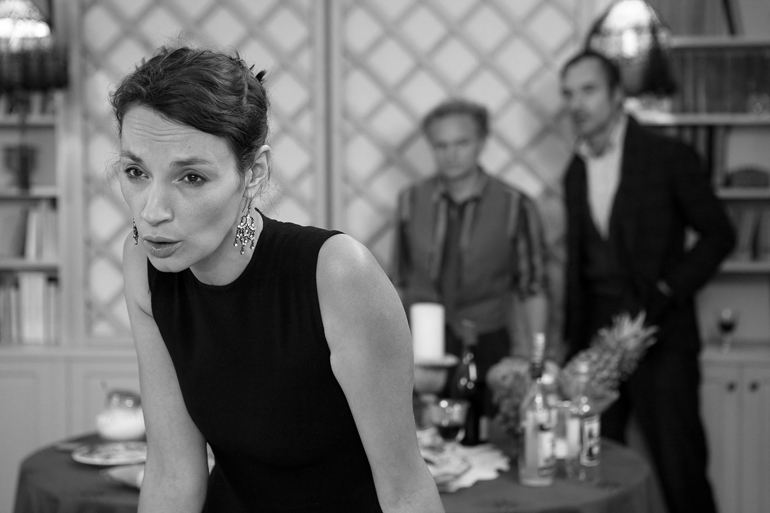
I know that you don’t really believe in what is usually called “direction of actors”, but do you think that there is something that resembles it in relation to actors’ voices? A direction of voices, almost in the same terms as an orchestra conductor?
Let’s be precise: I don’t believe in any method of directing actors in film. First of all, because of its intrinsic heterogeneity. Secondly, simply because the discontinuous technique of a film shoot doesn’t allow for any logical construction of character. When I start to think seriously about the film I’m going to make, I listen first of all to the voices of the actors, and I try to imagine what that mixture of timbres would produce. It’s true that I have the advantage of writing directly for actors I have already chosen and, even if when we start filming the cast is not exactly the same as what I’d planned, there is an overall idea that always remains; a particular sound, specific to the film, that is formed in spite of casting changes. The role of General Epanchin was intended for Pascal Greggory, and I had to replace him myself a little unexpectedly, but that didn’t fundamentally change the relationship between the voices. My voice is less interesting than his, poorer, thinner, but I asked Rosalie Revoyre, the sound engineer on the film, to help me keep it at a low register. And I think that we more or less achieved it. When I’m shooting, I usually have the idea of bringing together very different types of actors. The Russian playwright Vsevelod Meyerhold said somewhere that a heterogeneous cast is a guarantee of inevitable catastrophe. He is right, for theatre. In cinema, what compromises success is homogeneity. Going back to your musical analogy, for me cinema is closer to Stravinsky (where everything has to be disconnected while still sounding together) than to Bruckner (where everything has to fuse into a single, powerful sound).
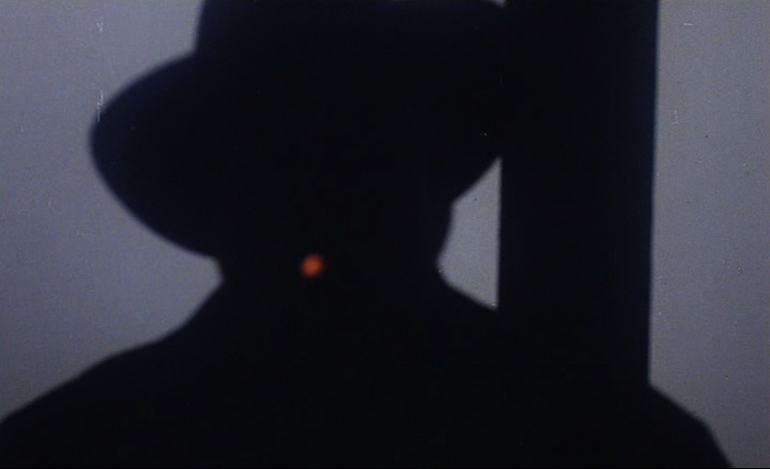
Let’s go back to the voice-over. All too often it was excessively codified, turning it into something generic, something that formed part of the rhetoric, the language belonging to an era, of classical cinema. A casual spectator cannot see beyond this phenomenon in many cases, and so the voice-over always seems too ingenuous to superficial spectators today. Could you think of any examples that get away from this kind of use, like the case you mentioned of Orson Welles, for whom the voice-over very soon became a means of speaking in first person in his films?
Yes, Welles, of course, and perhaps that’s why I feel an immense affection for him, even if I don’t particularly like his films. He is for me the word made flesh, as are also, in a certain way, Lionel Barrymore, Barbara Stanwyck, Delphine Seyrig, Faina Ranevskaya… They are actors we see if we close our eyes, and we hear if we cover our ears. They are voices that walk. Visible voice-overs.
In particular, I really like the rhetorical use of the voice-over in Hollywood cinema, precisely because it is related to rhetoric. Rhetoric doesn’t stand for lying, or for mockery. There is great honesty in it and, therefore, clarity in elocution; the voice-over tells us the intrigue – that is its objective and its usefulness. On occasions, slightly displacing the rhetorical frame, it may give rise to very beautiful things, thanks to an effect of strangeness and of narrative density. For example, at the beginning of Secret Beyond the Door (Fritz Lang, 1947), in the church scene.
Welles was also practically a pioneer in consolidating what is generally called the essay-film with F for Fake (Orson Welles, 1973). Do you think that he was the first to use the voice-over as an instrument of thought within the film, in a similar way to some of the work of Chris Marker or Jean-Luc Godard?
I don’t know. I don’t have any relationship with Marker’s films, and what I have with Godard is too episodic, although intense. But I think that, for him, the question doesn’t even come up. The voices, the noises, the music, the collages of quotes, are like posters from the silent film era. He has his roots more in agitprop and Vertov than in Madame de La Fayette.
Many of your films are adaptations of Russian literature, translated by yourself into French. Do you try to preserve the texture of the Russian language? I believe, incidentally, that a language that we don’t understand conveys its material essence in cinema, and it doesn’t matter whether we understand it or not, as in opera.
I don’t try to preserve the texture, no. On the contrary, I believe that the transition from one language to another is not only indispensable, but advantageous. What I like to do when I adapt Dostoyevsky or Chekov is to look for what the actors who play them in French can say about them. It offers the possibility of creating a certain distance, which for me is indispensable. The spectator is invited to identify this distance as a difference, and it is in the difference that the possible similarities or linkages can be appreciated. If you put two Golden Delicious apples side by side, well, you have two golden apples. But if you put a Cox’s Orange Pippin next to a Golden Delicious, you'll have two apples: one yellow, the other yellow with red streaks.
There is another reason: it is impossible to recreate the rhythm of Russian in French. As Russian is a tonic language, with shifting accents, and French is much more fixed, it would be like passing from a loud conversation to one whispered, with all the violence that such softness implies (remember what Pascal said about it, when he spoke of gentleness as an instrument of tyranny). In any case, the naturalist outbursts that are so successful in France don’t interest me: it is my impression that we grasp the meaning better when it is articulated calmly. That is the true threat, without any fuss. Look at how a tragedy hits you in the films of Hawks or Tourneur: in a quiet voice.
Foreign accents have also become a way of codifying characters in this naturalist avalanche. Biette spoke of an almost chauvinistic streak in the language of Bresson3. If we imagine what Pickpocket (Robert Bresson, 1959) would have been like filmed today, we can be sure that the main actor would have a foreign accent. Sound, through the voice, has almost turned into a way of stigmatising the character...
Exactly. And Abdellatif Kéchiche or Maïwenn would direct it. And there would be a steadycam following the thief through the train station, and he would end up singing, “Oh Jeanne, pour aller jusqu’à toi/Quel drôle de chemin/Il m’a fallu prendre”, with music by Benjamin Biolay. Everything would end in a karaoke scene, but without failing to address the painful problem of prison overpopulation. What a fantastic project! I don’t know if there is chauvinism in Bresson’s language: there is a trace of classism, yes, but that’s also typical of the era when he was making films. Although his models don’t obviously look like professional actors, there isn’t that much difference, from a lexical point of view, between the dialogues written by Bresson and (I’m caricaturing here) those of Aurenche and Bost. In my opinion, the true break came after 1968, when certain intonations, certain vocabulary, that were not the language of the street, came through the news, before penetrating the cinema.
Having said that, I would say that the idea of an accent as a stigma is actually a thing of the past (the good blacks, the bad Jews, the stupid Germans, etc.), while today the accent has turned into the external sign of that phenomenon that has been given the horrible name of “diversity”. In the film traditions where dubbing was (and continues to be) almost an obligation, they didn’t hesitate to replace an actor’s voice if it was deemed that his accent revealed too much, if I can put it that way. I don’t know when Clauda Cardinale finally got back her beautiful raspy voice; she was always dubbed. And the Soviets never put themselves in embarrassing situations because of their excessive caution. Alexei Guerman had no scruples at all, and declared that real filmmakers never resorted to direct sound. This would force us to toss a good number of people into the garbage... although Pasolini hated direct sound, by the way, which didn’t stop him from taking the utmost care to compose the linguistic arrangement of his films, where he mixed different levels of language, dialects, etc. It is the Pasolinian accent, with actors who spoke fluent Pasolinian: Ninetto, obviously, Laura Betti…
The care taken with sound in your films is far from being the general rule in films recorded on digital video. Earlier you mentioned the processing of your voice in L’Idiot (Pierre Léon, 2007). How do you work with your sound engineers?
Do you think it has something to do with digital video? Perhaps in the sense that, for several years now, sound has begun to be treated as raw material rather than as a recording. The same thing has happened to music. The name given to this is “production”. I call it destruction. Technicians, not always competent ones, dissect the sonic mass, before saving each element on a track assigned for the purpose, and then fiddle around with the whole until they get the sound they like best, or rather, that conforms best to the unwritten law of cultural consumption. For example, you cannot (I mean, you are not allowed to) reject Dolby, and certainly not stereo. On a film shoot the sound is often recorded unconsciously thinking about post-production. Many sound engineers (who also do the sound mix for the film – a serious mistake from my point of view) simply don’t worry about articulation, which submerges at least a quarter of the dialogues into the fog, but then they can spend a whole day mixing sounds that don’t go together at all. This is what they call “sound design”. I call it sound disaster. This fiddling about (and the same thing happens with the image) simply keeps me from being able to follow certain films (like Leviathan [Lucien Castaing-Taylor and Verena Pavel, 2012]), for example.
In the case of my films, it took me forever to begin to feel satisfied. We were never able to get the sound right. We would do what we could, and we usually did it poorly. It would drive me crazy. I could only dream of what might have been heard! The image, on the other hand, always has a quality that, even when it’s dated, gives an idea of reality, beyond the mere technical outdatedness, that allows you to identify an image with an era. Without talking of Super 8, there is something interesting and unique in Video 8, Hi8 and DV images, something that HD cannot offer. HD is full and flat; it’s an image bloated by its own spotless beauty. But the colours are cold, even the warm colours, especially with the Canon that everybody uses without a second thought. But, although it is objectionable, although it is tasteless in this respect, the image does preserve that documentary quality. Sound, however, is more discreet: you need to have a very good ear to distinguish analogue sound. On the other hand, the technical defects are something that clatters in the ear at once. I had the good fortune of benefiting from the help of very thorough people, like Serge Renko, on many of my films, or Christophe Atabekian and Anne Benhaïem. They weren’t sound technicians, but at least we were able to try something. I believe that, in spite of everything, the sound in Oncle Vania (Pierre Léon, 1997) is interesting (the night scenes sound exactly as I heard them), and also the sound in Le Dieu Mozart II (Pierre Léon, 1998). But it wasn’t until L’Adolescent (Pierre Léon, 2001) that the sound really began to resemble something. I would still have to wait seven more years, when I started working with Rosalie Revoyre, to finally get the quality I was looking for.
There are also films, like Le Brahmane du Komintern (Vladimir Léon, 2004), for which you yourself were the sound engineer. Has that work in recording sound enabled you to reflect on the question in a different way?
It’s a curious story. Vladimir, for his film, which followed the trail of M. N. Roy, a highly eccentric and well-travelled Indian communist, had to shoot one part in Moscow, and he wanted to have a technical crew with someone who could speak Russian. I accepted on the condition that I could make use of the crew to shoot my own film during the breaks between shooting my brother’s film. The result was my film Octobre (Pierre Léon, 2004), another adaptation of Dostoyevsky. Well, the experience was not easy for me. I had some a few rather vague ideas, and I had to do the best I could with them. The technical side of sound is very difficult, because you always need to be ready and never complain, because the filmmaker has better things to do than worry about getting you out of your problems. So I complained to myself, I got caught up in cables, I assembled the control panel back to front, I used the wrong microphone... all kinds of fun. I ended up getting it in any case, and above all I learned (a little) about how to aim at the voice, and not to lose it. In Russia they call it “angling”, and it seems to me a very appropriate term; the voice is something you have to fish for, and it is like a fish – agile and free.
I’ve also learned a lot by acting in other people’s films. When I act in a film, I spend most of the time looking at what the technicians are doing (in my own films I’m too busy to do it), with the lighting, the sound, the set design, the make-up, etc. And the same thing happens when I’m giving classes: I learn by watching how the students learn. Sometimes I have the feeling that I learn more than they do. They’re always so distracted...
Translated from Spanish by Martin Boyd
Pierre Léon's filmography
Deux dames sérieuses, 1988
Hôtel Washington, 1993
Li per li, 1994
Le Lustre de Pittsburgh, 1995
Le Dieu Mozart, 1996
Oncle Vania, 1997
Le Dieu Mozart II, 1998
Histoire-géographie, co-directed with Mathieu Riboulet, 1998
L’Adolescent, 2000
L’Etonnement, 2001
Nissim dit Max, co-directed with Vladimir Léon, 2002
Octobre, 2004
Guillaume et les Sortilèges, 2005
L’Idiot, 2007
First episodes of Galimafré, carnets de cinéma, YouTube, 2008
Biette and Biette Intermezzo, 2008
Notre Brecht, « un film sans pellicule », presented at the Centre Georges-Pompidou in Paris, in the context of the programming for La Dernière Major ! (Serge Bozon, Pascale Bodet), 2010
Par exemple, Electre, co-directed with Jeanne Balibar, 2011
ENDNOTES
1 / PASOLINI, Pier Paolo: “Observations on the Long Take”. Originally published in: Nuovi Argomenti, Rome, September 1970. “I think that cinema is still (not from an aesthetic and stylistic perspective, but from a purely semiological perspective) an infinite long take. In this sense, it has the same characteristics as reality. Because, our lives – what are they? A reality – a process of actions, words, movements, etc. – that is ideally filmed by a camera, a reality that can only be captured through an infinite long take […]. Death performs a lightning-fast editing job on our lives: that is, it selects its truly significant moments (which now cannot be modified by other potentially contrary or inconsistent moments), and orders them successively, turning our present, infinite, unstable and uncertain, and therefore linguistically indescribable, into a past that is clear, stable, certain and, therefore, linguistically describable (precisely in the context of general semiology). Only through death do our lives serve to explain us.”
2 / In French , «malin», phonetically similar to «Malick».
3 / See Fernando Ganzo's article on Biette, among others, in the first issue of Cinema Comparat/ive Cinema on this cycle. See HERE.
ABSTRACT
This conversation attempts to address the question of the voice-over through various circular journeys. It begins with a consideration of the sense in which this resource could be deemed something essentially novelesque, something that began as a natural phenomenon in classic cinema and that today has ended up turning into a deliberate and conscious search. It then moves onto a reflection on the filmmakers who have made fundamental changes to cinematic narration using the voice-over. The work of Pierre Léon as a filmmaker, actor and even a sound engineer on some films also allows a technical approach to the work of recording the actor's voice as filmic material.
KEYWORDS
Sound, Orson Welles, Sacha Guitry, Boris Barnet, Éric Rohmer, Robert Bresson, Recording, Voice-over, Actor.
BIBLIOGRAPHY
BIETTE, Jean-Claude (2001). Cinemanuel. Paris: Éditions P.O.L.
FERNANDO GANZO
Fernando Ganzo is Chief-Editor of So Film and co-editor of the journal Lumière and contributes to Trafic. He studied Journalism at the Universidad del País Vasco, and is currently a doctoral candidate at the Department of Information and Social Sciences at the same university, where he has also taught at the Painting Department of the Fine Art School. He has taken part in research groups of other institutions, such as Cinema and Democracy and the Foundation Bakeaz. He also holds an MA in History and Aesthetics of Cinema from the Universidad de Valladolid. He has programmed avant-garde film programmes at the Filmoteca de Cantabria. He is currently undertaking research on Alain Resnais, Sam Peckinpah, and the isolation of characters via the mise en scene.
Nº 3 WORDS AS IMAGES, THE VOICE-OVER
Editorial
Manuel Garin
DOCUMENTS
As I Was Moving Ahead Occasionally I Saw Brief Glimpses of Beauty
Jonas Mekas
The Word Is Image
Manoel de Oliveira
Back to Voice: on Voices over, in, out, through
Serge Daney
FILMS UNDER DISCUSSION. INTERVIEWS
Sounds with Open Eyes (or Keep Describing so that I Can See Better). Interview to Rita Azevedo Gomes
Álvaro Arroba
ARTICLES
Further Remarks on Showing and Telling
Sarah Kozloff
Ars poetica. The Filmmaker's Voice.
Gonzalo de Lucas
Voices at the Altar of Mourning: Challenges, Affliction
Alfonso Crespo
Siren Song: the Narrating Voice in Two Films by Raúl Ruiz
David Heinemann
REVIEWS
Gertrud Koch. Screen Dynamics. Mapping the Borders of Cinema
Gerard Casau
Sergi Sánchez. Hacia una imagen no-tiempo. Deleuze y el cine contemporáneo
Shaila García-Catalán
Antonio Somaini. Ejzenštejn. Il cinema, le arti, il montaggio
Alan Salvadó


